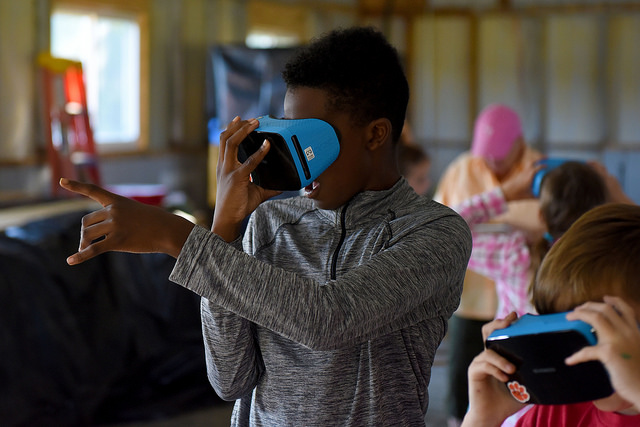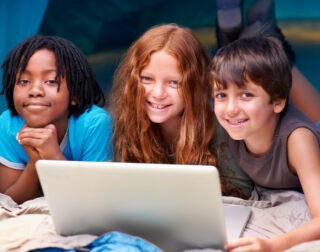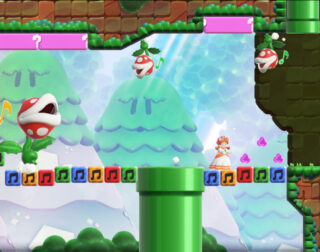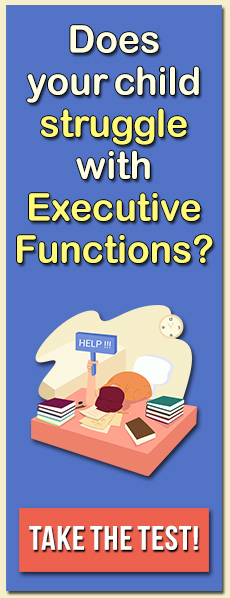Can VR enhance executive-functioning and problem-solving skills? Here’s how virtual reality can improve the generalization of skills.
Twenty-first century kids are learning something when they play video games, and not just how to shoot a “bad guy” or to navigate a world made of blocks. Watch children playing a video game, and you’ll see how they learn techniques and strategies on one level and then flexibly apply them in more challenging situations later in the game. Or observe the problem-solving, planning, persistence, and decision-making skills necessary to beat a complex game. The efficiency of video games and other screen-based technologies as tools for learning is limited merely by the generalization of game-based learning to the real world.
But transferring the skills and knowledge required in gameplay to daily activities and the demands of school, work, and family is easier said than done. One reason these skills don’t readily transfer from the game to the real world is that the game environment is nothing like the child’s real world. What would happen if we could add some reality to the game world, maybe some virtual reality? Researchers have begun to demonstrate how virtual reality can improve the generalization of skills from a game to the real world.
The promise of virtual reality (VR), best defined as “a realistic and immersive simulation of a three-dimensional environment, created using interactive software and hardware, and experienced or controlled by movement of the body,” is that the characteristics of VR make it into an incredibly powerful tool for learning. Consider this quote from Nir Keren, PhD: “ A picture is worth a thousand words. A movie is worth a thousand pictures. A simulation is worth a thousand movies. An interactive simulation is worth a thousand simulations. A 3D interactive simulation is worth a thousand interactive simulations. A full-scale, 3D, interactive simulation . . . priceless!”
There is already evidence that VR can improve “hard” skills such as surgical techniques, piloting, and military tasks. Many of these hard skills can be directly practiced (in a virtual environment that mimics real-world demands) through VR. More difficult, however, is the application of VR to “soft” skills such as executive functions, social-emotional learning skills, and critical-thinking skills. These skills require flexibility and may need to be applied across a wide range of settings, where conditions and the variance contributed by human behavior are less predictable. Albert Rizzo describes how innovative features in virtual reality make it customizable and able to provide feedback in real time. VR provide cues; captures behavioral performance; and allows for retrospective, intuitive, after-action review.
The best learning environments share many of these characteristics. At its best, virtual reality is explorable, promotes questions and curiosity, engages the learner, and is adaptable. It is also engaging, stimulating practice and encouraging reflection and metacognition. Even in today’s infancy stage, virtual reality will soon be widely available in the classroom and clinic as a tool for teaching soft skills. While VR shows promise for teaching skills such as executive functions and social emotional learning (SEL), cognitive scientists remain unsure as to the most important characteristics that will lead to the generalization and transfer of skills.
As emerging companies and technologies move forward in this field, here are some suggestions for using virtual reality to improve the generalization of social-emotional, executive-functioning, and problem-solving skills from games to the real world:
Create game-based scenarios that have more ecological validity. Making the virtual reality setting more similar to a real-world environment enhances the ability of players to know how and when to apply executive and SEl skills.
Build in feedback loops that show alternative use of skills within a game. Show players alternative strategies and the results of their decision making, even if they were not helpful.
Make the virtual real. Use VR when the real-world problem-solving skills are needed in a virtual environment. Practice skills using VR in online settings or those that involve digital relationships such as making phone calls or completing a research project.
Use VR to demonstrate how other players solved the same game-based dilemmas. This can be helpful for improving SEL and perspective-taking skills, particularly for children who struggle with social-emotional skills.
Use a variety of scenarios when training a new skill. One of the most powerful capacities of VR is its ease for altering the environment and challenges based upon the need of the user.
Read more about the ways video games and virtual reality can help kids learn skills, especially kids with ADHD, and how to help kids translate these skills to their every day life.
Featured image: Flickr user S.C. National Guard





